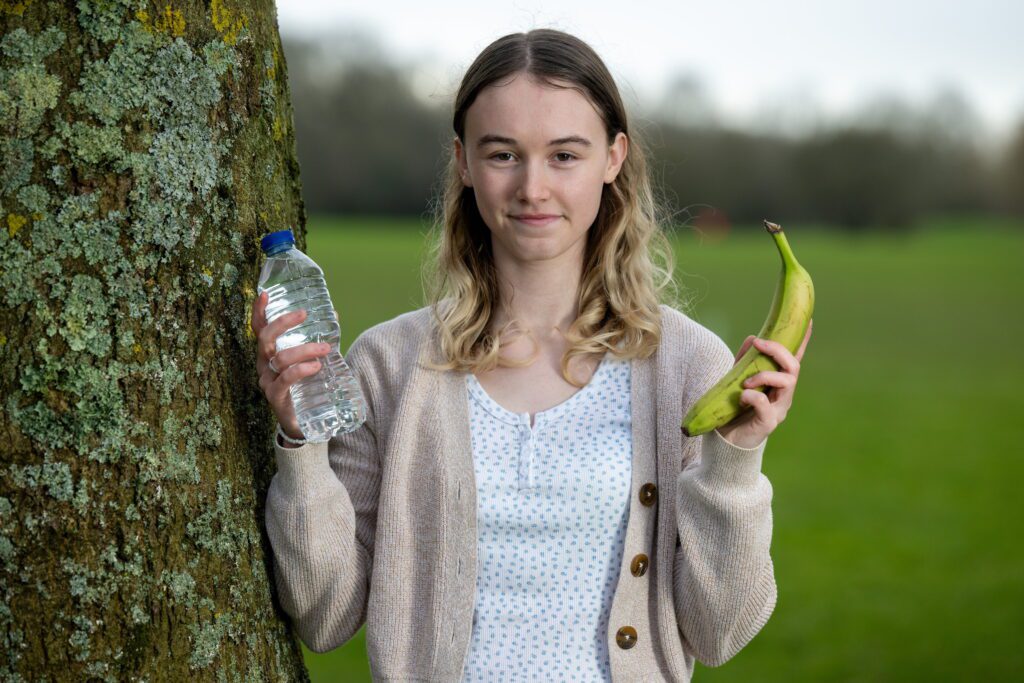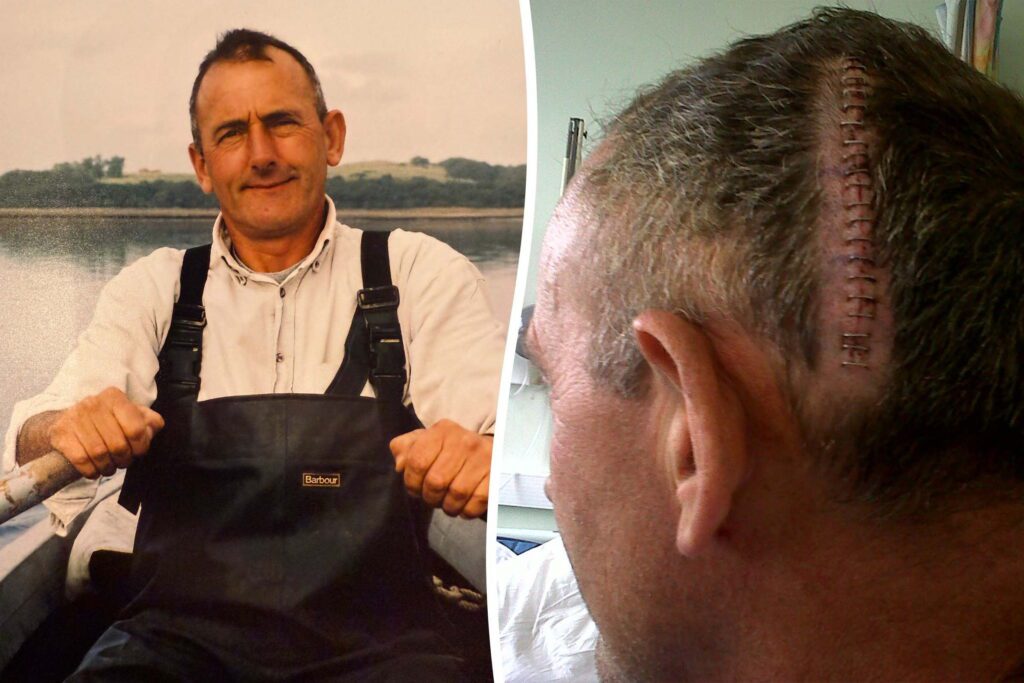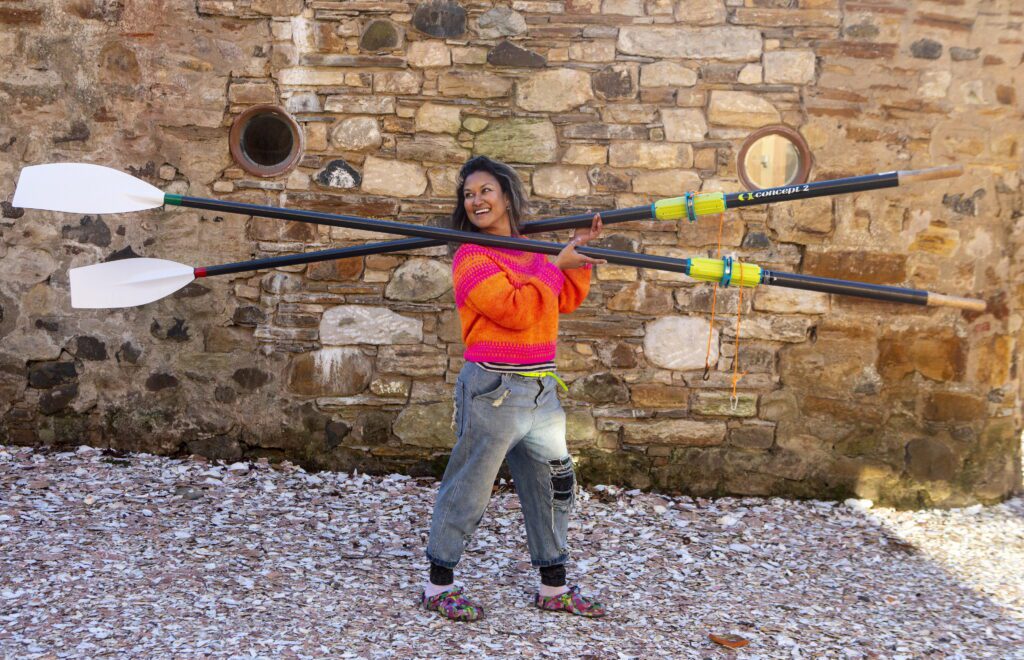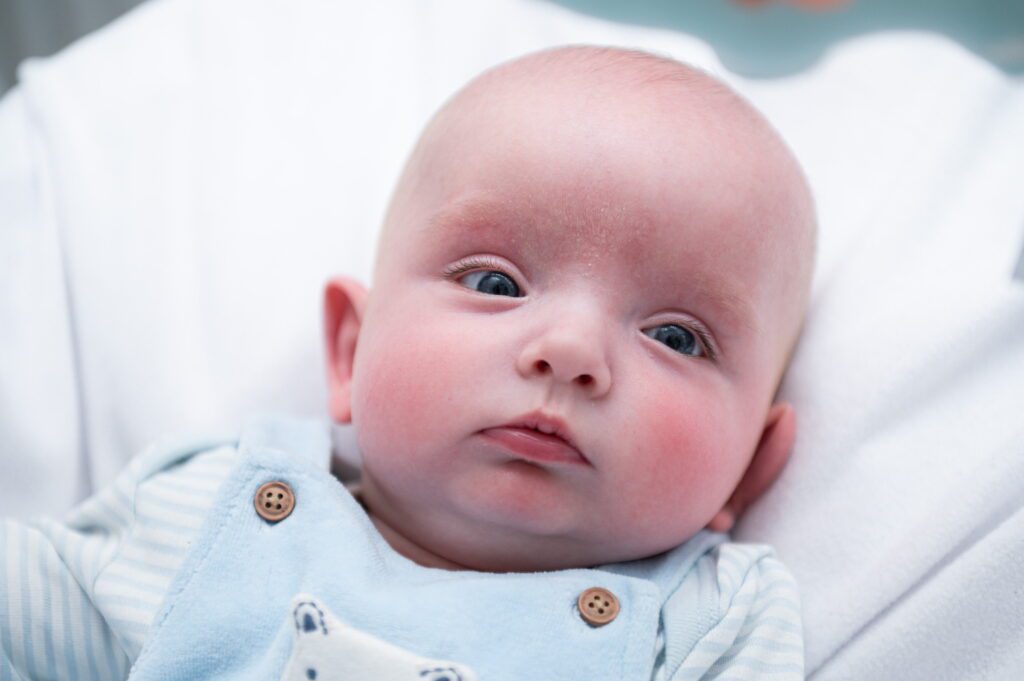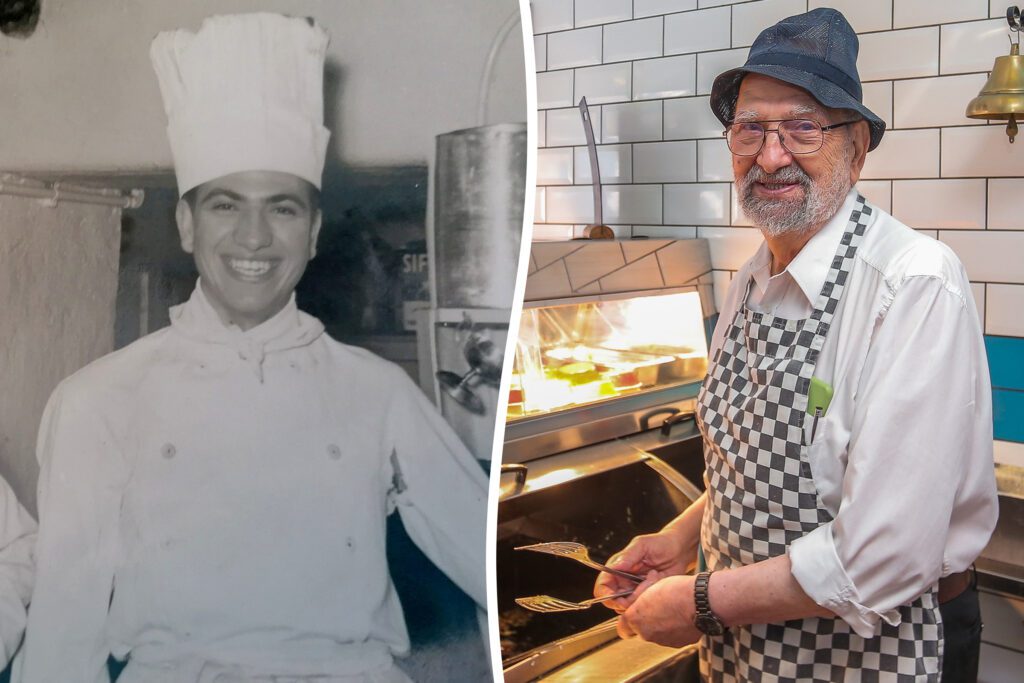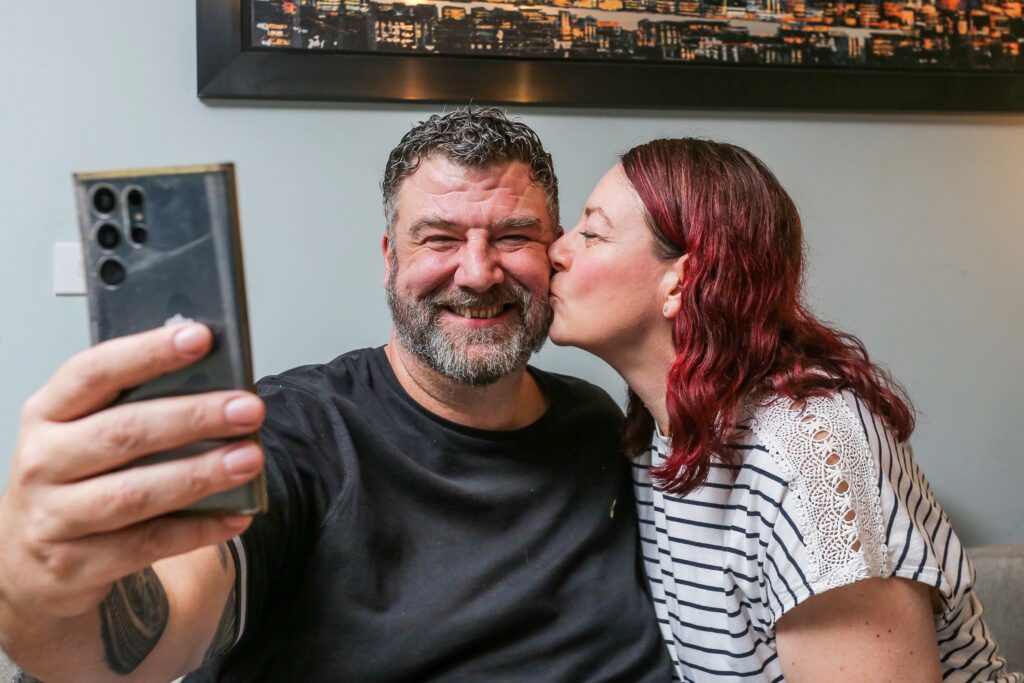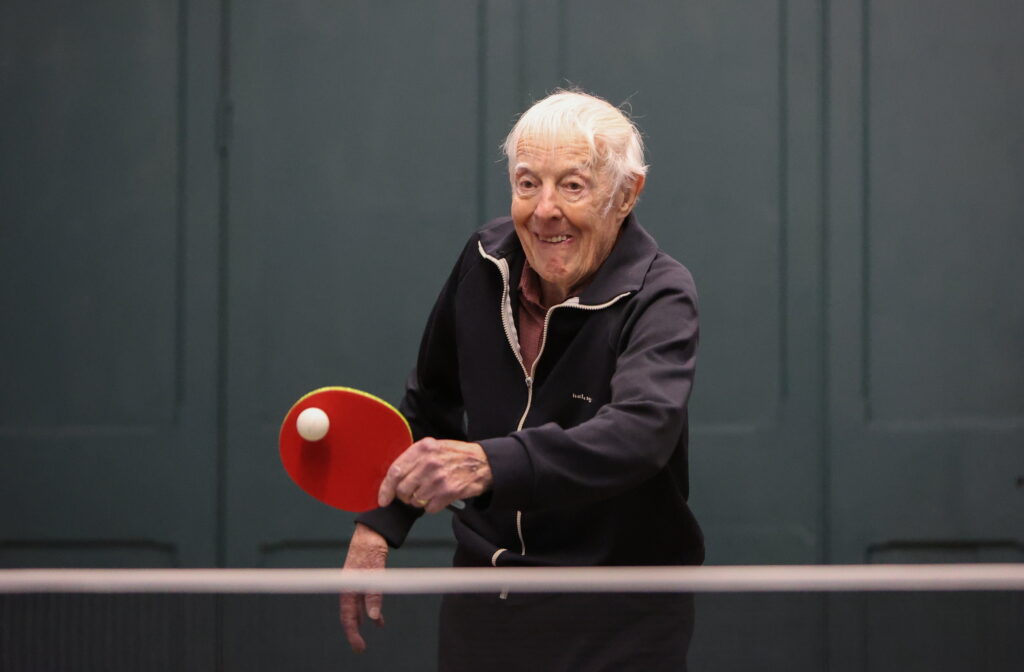“I was clinically dead for 14 minutes when I gave birth to my healthy baby girl”
A mum was ‘clinically dead’ for 14 MINUTES before waking up to discover she had given birth to a bouncing baby girl.
Natasha Sokunbi was 37 weeks pregnant when she called 111 after she suffered chest pains and was struggling to breathe.
The 30-year-old was advised to go to A&E where she collapsed of a cardiac arrest in the waiting room at Royal Stoke University Hospital.
As medics desperately tried to bring her back to life, doctors also battled to save her unborn baby.

Just four minutes after being rushed into surgery, doctors delivered 6lbs 7oz baby girl Beau via emergency caesarean section.
Medics spent more than 30 minutes resuscitating Natasha before she was stable enough to be put into an induced coma.
She woke up the next day in the critical care unit and was told she had had given birth to a girl.
Natasha, from Stafford, said: “My heart wasn’t beating when the doctors delivered Beau. I was basically dead when they pulled her out.
“One team of medics were delivering her via C-section while another team performed CPR on me.
“The next thing I remember was when I woke up in intensive care and my husband walked over to me with a photo of Beau and said ‘it’s a girl’.
“We hadn’t found out the sex so it was a complete surprise.
“I couldn’t see Beau straight away because I was still very weak and she was in the neonatal unit but I finally saw her a few days later.
“I was really poorly but the doctors and medical teams were amazing.
“They told me I’d been clinically dead for 14 minutes. They saved my baby and they saved me.”

Natasha and husband Ayo, 29, had been looking forward to the birth of their second child when she collapsed on December 3.
Support worker Natasha, who is originally from South Wales, said: “I wasn’t feeling well for a couple of weeks because of chest infection.
“On that morning I called 111 who advised me to make my way to the Royal Stoke.
“I got a taxi to the hospital and went into triage and told them I was really having problems breathing and they told me to wait.
“As I walked back into the waiting room I collapsed and fell forward onto my baby bump.
“I remember bits, like the doctors performing CPR and putting a defibrillator on me.
“When I was having the C-section I remember being in pain but then everything going black.”
After Beau was delivered, doctors called Natasha’s husband Ayo, also a support worker, who rushed to her bedside.
Natasha said: “Ayo had no idea I was in hospital because he was asleep with our other baby daughter when I took a taxi to A&E.
“When he received a call from the hospital he thought they were telling him that I’d had the baby but the said he should get here straight away.
“He was so good. When I was in the coma I can remember hearing him talking to me saying ‘Come on Tash’ ‘Please wake up.’”
Natasha spent three weeks in hospital and had an ICD heart-starter device fitted to prevent her suffering another cardiac arrest in the future.
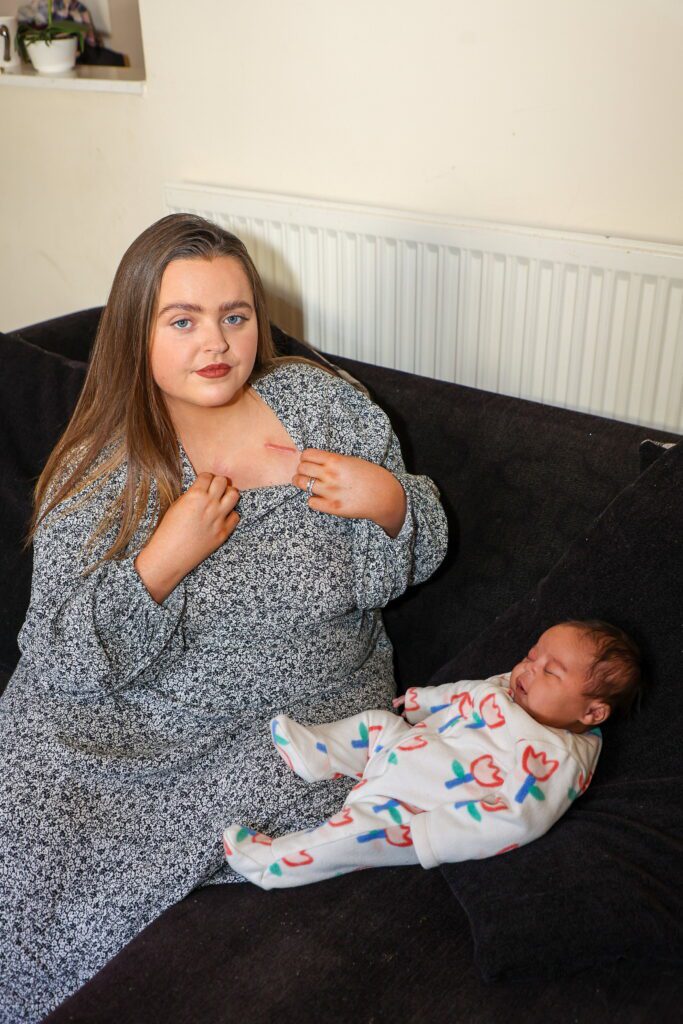
The mum-of-two is now back home and looking after Beau and her 15-month-old daughter Love.
She said: “I have had heart problems and I think the pregnancy put extra strain on me.
“I still have flash backs and worry that it’ll happen again but I’m just so grateful to the doctors for saving me and Beau.
“To start with I couldn’t hold her very well, but I always tried to do skin to skin with her.
“Being a mum of two is great and I’m regaining my strength and independence.
“Beau is a miracle, and you can never fully put what they’ve done for us it into words.
“The staff were all fantastic. Now I’m much more appreciative of life and won’t take anything for granted ever again.”
In recognition of their actions staff involved in the care of Natasha and Beau have been presented with the Chief Executive Award.
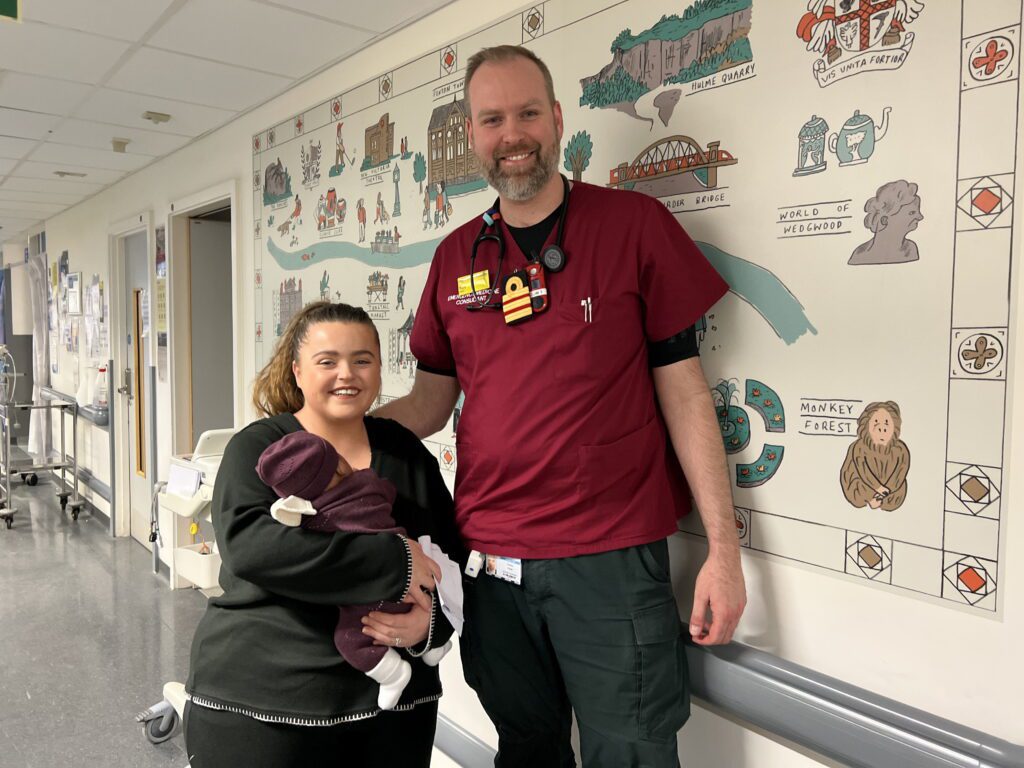
Dr Andrew Bennett, who was one of the first doctors to treat Natasha, said: “The issue when you have a mother who goes into cardiac arrest is that you not only have the team required to resuscitate mum, you very quickly of course when the baby is out, also have a team ready to resuscitate the baby if that’s required.
“So the number of clinical teams involved is huge. This has got to be one of the proudest moments that this department really has ever seen and that collaborative effect from all involved was incredible.”
Senior sister, Alison Hopwell, added: “It’s a rare event but it happened and it happened on a very very busy December morning.
“The department was very busy; however, the whole team, too many to mention, from all specialties pulled together on that morning.”
Dr Simon Constable, chief executive, said: “Natasha’s case is about as serious as it gets and involves not just one person but multiple teams looking after and getting the outcome for her and Beau.
“So it’s a great testament to the real skill and team work that made the outcome what it is because it could have been so very different and I think we recognise that would have been a tragedy.”
“I am a momo twin – we were given a 1% chance of survival”
A woman who is one of the rarest types of twins in the world says she is grateful to be alive after doctors gave her and her sister a one per cent chance of survival.
Hope and her sister, Faith Baxter, both 24, are Momo twins – monochorionic monoamniotic – identical twins who share a placenta and amniotic sac.
Doctors told their parents that if they went to full term there was a chance one of the twins would not survive so they decided to induce them two months early.
The twins spent six weeks in the NICU and were given a one per cent chance of survival.
Hope said it was a “miracle” that both of them are alive and thank their parents every day for their decision to have them induced.
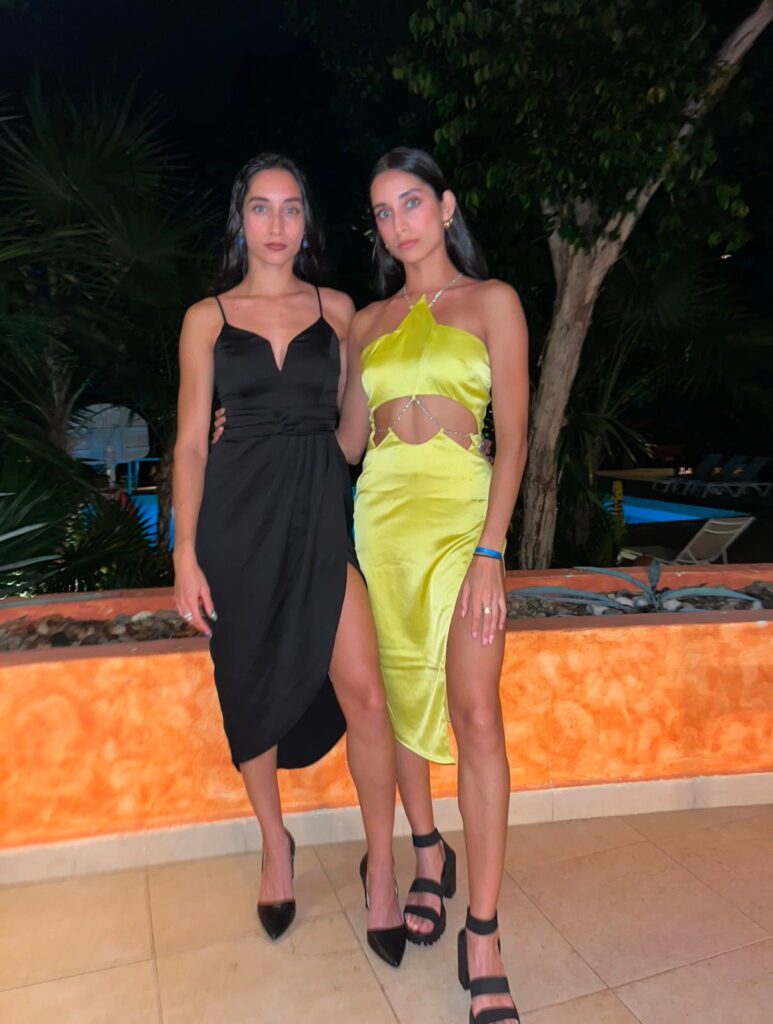
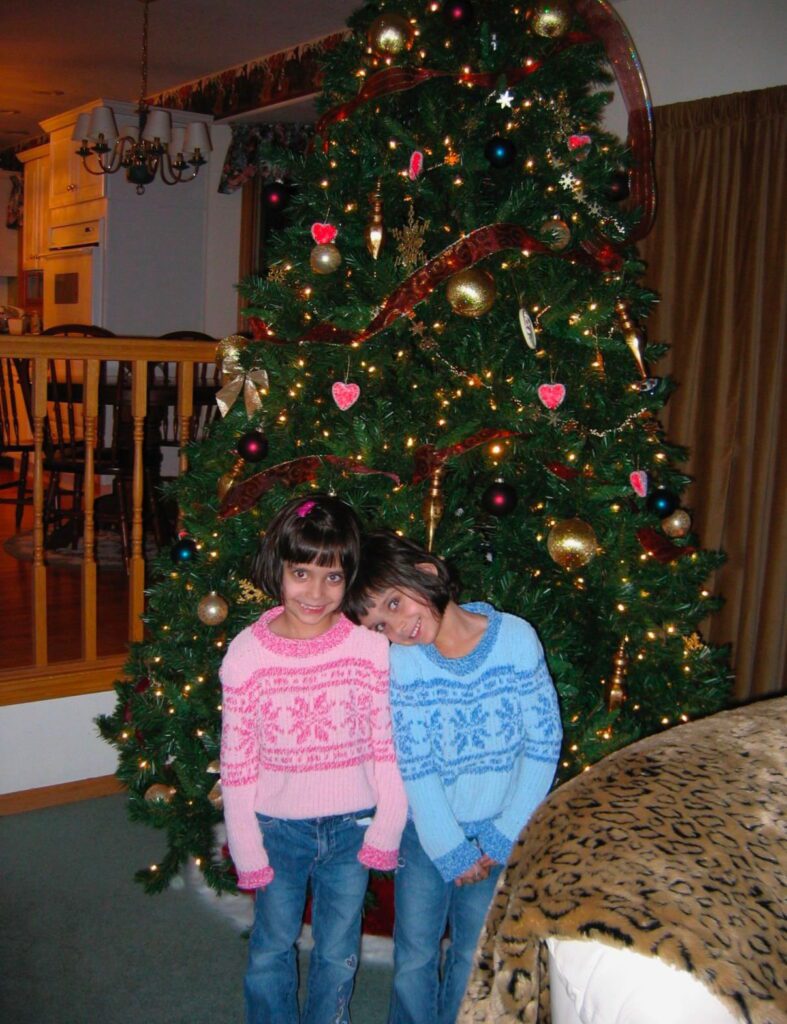
Hope, a dental student, from Lima, Ohio, said: “I didn’t realise the severity and extent of the amount of fear my parents were put through.
“I am so grateful to them to be here – every day is a gift for us.
“On our birthday, we reflect on the fact we are miracle babies. I am so proud of how far we have got.
“Even to have both of us here, alive and well, is a miracle.”
Her mum was five months pregnant when doctors told her she was expecting Momo twins.
Mo/Mo twins have a higher risk of complications during the pregnancy – including infant death and childhood disability – which fuelled their parent’s decision to induce them two months early.
Hope said: “When they found out we were Momo twins, they were told there could be further complications down the line which is why we were born two months premature.
“It was my dad’s call, the doctors didn’t want us out so early as we were fully developed.
“They told my dad that if we went full term there was a chance that one of us might not make it.
“My dad said he wanted both twins to survive and told the doctors he wanted us to be induced two months early.”

The twins were born on August 25, 2000, and spent six weeks in the NICU.
Faith was born with a collapsed lung and Hope was born with heart problems and was being closely monitored.
It was in the NICU that their parents named them Hope and Faith.
Hope said: “It was definitely a scary time for my parents, everything leading up to the birth was scary for them.
“We were named Hope and Faith as our parents weren’t sure if we would make it.
“Doctors gave us a one per cent chance of survival as they didn’t think either one of us would survive.”
Despite being identical twins, Hope said their parents wouldn’t get them mixed up as she was born with heterochromia – the presence of different coloured eyes in the same person.
Hope said: “Lucky for them, they never got us mixed up growing up. The way they would tell Faith and I apart is I have two different coloured eyes.
“I don’t think they struggled with us growing up, they had a system where when one of us would be at pre-school and the other one would be at home with our parents.
“They didn’t want us to completely rely on each other.”
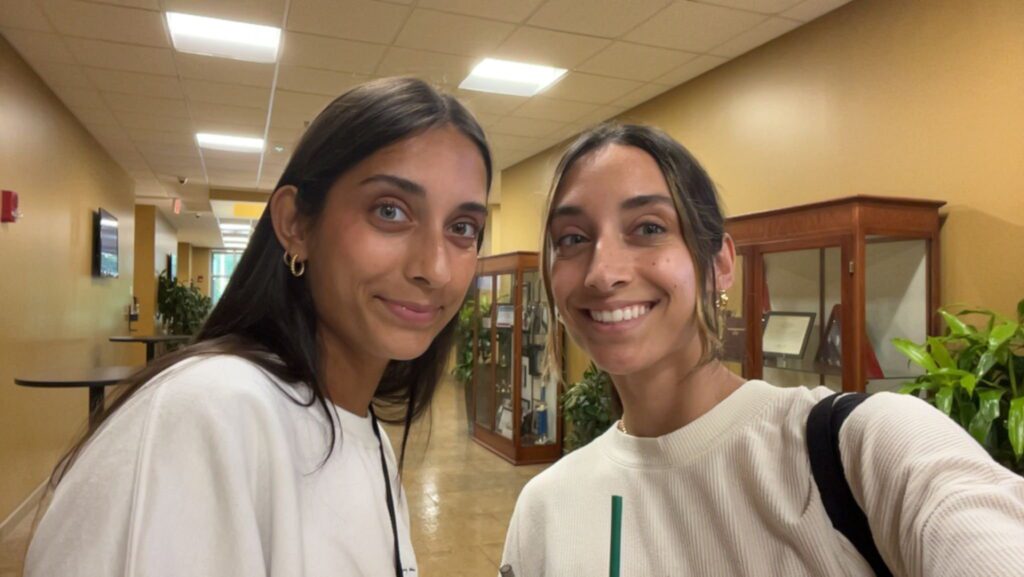
Hope said despite being best friends with her sister, it could be challenging growing up together as they would spend all day at school together and go home together.
Now, the sisters live in completely different states as Faith is training to be a doctor at VCOM-Carolinas, Spartanburg, South Carolina.
Hope said: “I would say we are best friends, we have always motivated each other.
“But there were definitely some struggles, being an identical twin, especially in high school, it felt like a competition with sports, grades and who had more friends.
“Because we’re so busy now, we don’t really realise how we’re not together.
“We are constantly talking to each other over text or FaceTime.
“We are always talking together so we forget how we haven’t seen each other in ages as we always know what we get up to.”
“I have 40+ allergies – including water – I track them on an Excel spreadsheet”
A woman with over 40 allergies – including WATER – has to use a colour-coded spread sheet to keep track of them all.
Chloe Ramsay, 19, was born with lots of food allergies and would even go into anaphylactic shock after eating certain foods – such as bananas and potatoes.
While she no longer ends up hospitalised from allergic reactions thanks to treatments in childhood, she currently has a list of 40 things that can cause her mouth and throat to swell up dangerously, or bring her skin up in hives.
They include kiwis, strawberries, raspberries, blueberries and grapes.
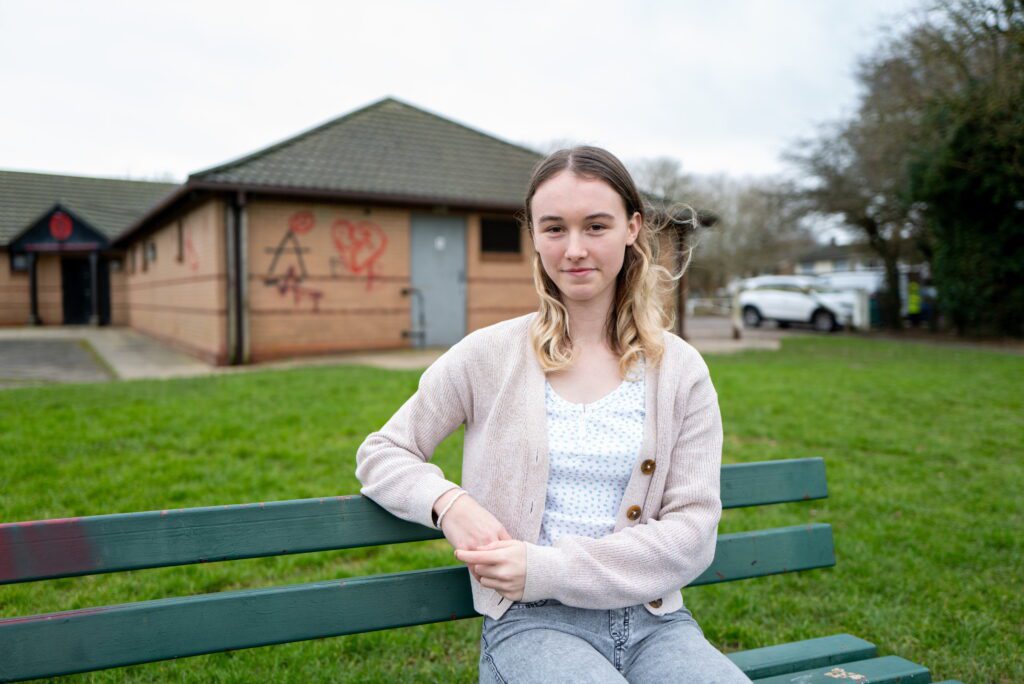
Chloe was diagnosed with ‘pollen food syndrome’ – an allergy to any pollen-derived substances – including sweets, fruits, and even perfumes in June 2023.
This explained most of her allergies – but her most unusual is an allergy to WATER, known as aquagenic urticaria.
When unmedicated, showers cause her to flare up in hives and getting caught in the rain leaves her “wanting to scrape [my] skin off with a knife”.
New allergies frequently pop up and their severities can change too – meaning Chloe has to keep track of them with a colour-coded spreadsheet.
Chloe, a carer, from Havant, Hampshire, said: “We found out about my first allergies when I was six months old and my mum was weaning me.
“If I was given potatoes or bananas I would go blue and pass out, but luckily my reactions aren’t that bad any more.
“They change, but currently I can’t eat foods like strawberries, kiwis, fruit juices and I can’t use scented shampoos and body washes.
“With the water allergy, it just came on one day – I thought I’d used a body wash I was allergic to, but it got worse.
“Whenever I washed my hands I would get massive rashes and felt like ants crawling on my skin.
“I’ll have to be giving myself injections to treat my allergies for life.”

Chloe remembers frequent trips to hospital as a child to get epipens and medication.
When she ate a banana or potatoes she would go into anaphylactic shock and was rushed to A&E.
Over years, the hospital used a ‘microdosing’ technique to train the body not to go into anaphylaxis and to reduce her severe reactions.
Some allergies faded away over the years, while new ones emerged – and she stopped being able to eat any fruit at all.
The reactions were “invasive” such as swelling lips, redness and a “scratchy” sensation when she breathes.
As a result of what would later be diagnosed as pollen food syndrome, she also needed to avoid perfumes, scented soaps and even wood-smoked meats because of the pollen in the trees used to smoke it.
She said: “At school I used to have my own little blue band so the dinner staff knew my allergies.
“They had to make my food from scratch.
“Now I’m at university, I struggle because a lot of the social stuff is based around food and I have to constantly be checking the menu.
“It makes me quite anxious to be sitting around food that I know I can’t eat.”
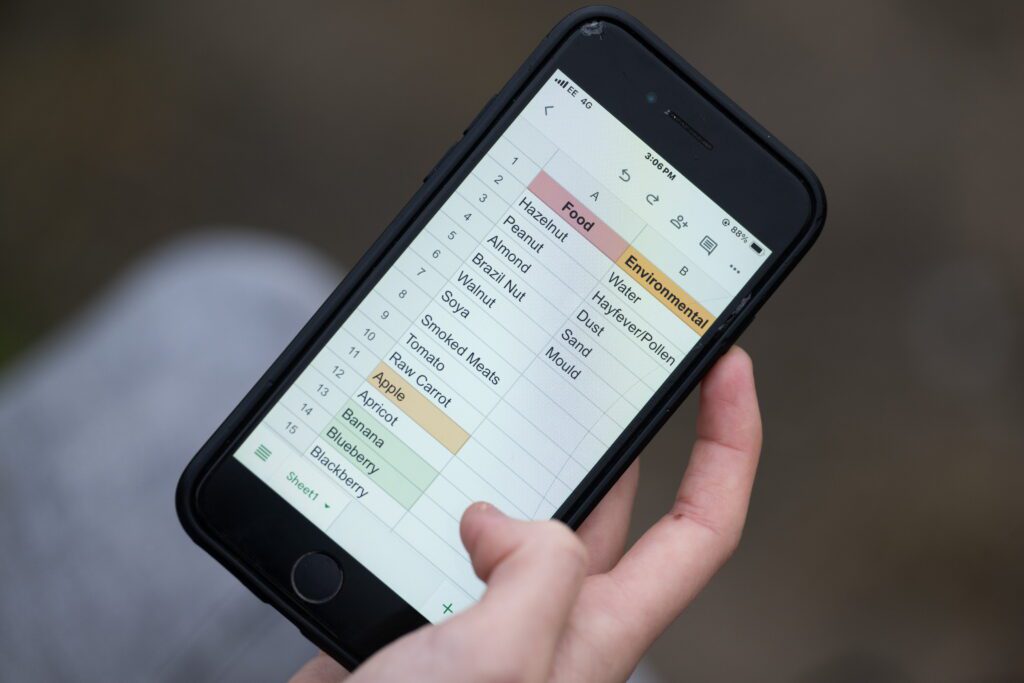
In October 2022, she also started breaking out in hives when her skin touched water.
Her reactions were sometimes so intense she would be unable to focus on anything else.
She was issued a diagnosis of aquagenic urticaria – an allergy to water on her skin – but luckily, drinking it caused no issues.
She said: “It can be itchy and painful, like having ants crawling on your skin.
“The allergy came almost suddenly. I would be fine taking showers then one day I started itching and each time was worse.
“I changed my shampoo, conditioner, body wash, flannel, scrubber, and the water temperature – nothing helped.”
The condition worsened over time and became debilitating for her.
She said: “Once I got stuck in the rain waiting for a train and by the time I got inside, I couldn’t stop scratching – I looked like a drug addict.
“I felt like I wanted to scrape my skin off with a knife. I told even told my mum ‘I can’t do this any more’.”
Last year, she was introduced to a medication injected monthly to treat her allergies – after a medical board approved the strong drug because of her severe situation.
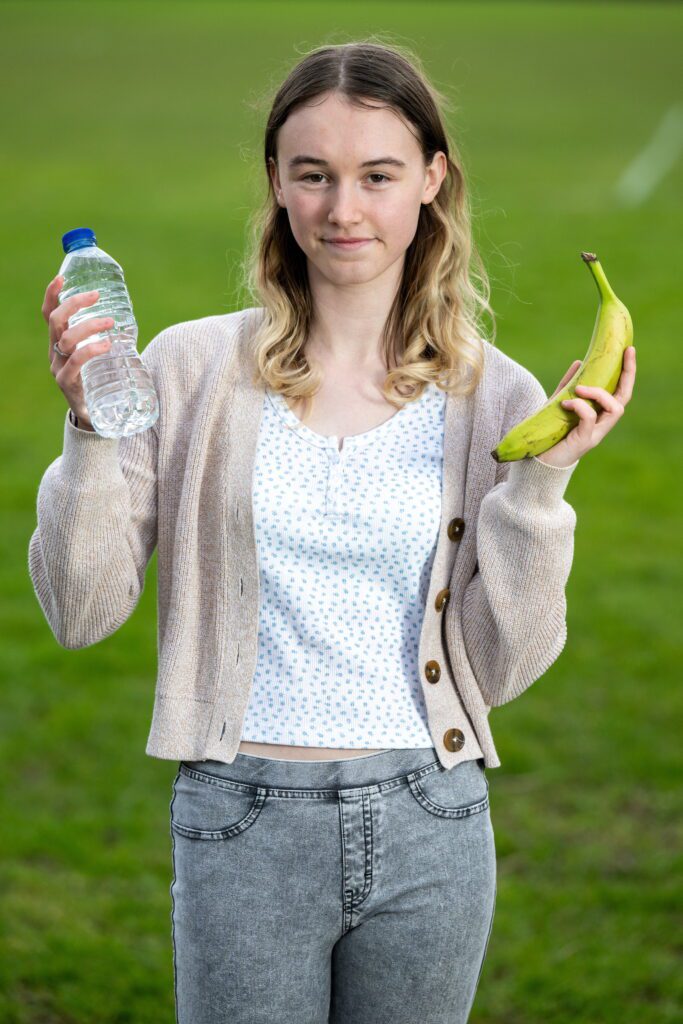
Twice a month Chloe has to inject herself with it to keep her allergies at bay – but she may need to be on it for life.
With the drug, her water allergy is “almost completely gone” but she still needs to be careful around perfumes and eating pollen-derived substances when on the medication.
She has to keep track of whatever foods she reacts to, and how severely, using a traffic-light colour coded system on an Excel spreadsheet.
She said: “So far, nobody has been on that injection for life. Apparently I’m one of the unlucky three per cent that wasn’t completely cured by it.
“I’m so unlucky – I used to get quite upset, but I just have to laugh it off now.
“I’m allergic to so many things that my parents joke ‘what will you be allergic to next, oxygen?’.”
LIST OF THINGS SHE’S ALLERGIC TO:
Peanuts
Hazelnuts
Soya
Smoked meats
Tomato
Carrot
Apricot
Banana
Blueberry
Blackberry
Cherriy
Cranberry
Grape
Grapefruit
Kiwi
Mango
Orange
Papaya
Peach
Pear
Raspberry
Strawberry
Dried apricot
Dried mango
Dried banana
Raisins
Dried cranberry
Tinned orange
Tinned pear
Tinned peach
Tinned apricot
Tinned apple
Tinned mango
Fruit pastilles
Wine gums
Haribo
Skittles
Jelly beans
Jelly babies
Water
Pollen
Dust
Sand
Mould
Dogs
Cats
Glue
Face paint
Insect bites
Perfumes
Candles
Air freshener
Deodorant
LUSH stores
Dad’s accused of “faking” brain tumour symptoms by GP including muddled speech
A dad’s cancerous brain tumour symptoms were dismissed as stress by a GP who even accused him of “faking.”
Stephen Blakeston, 53 when he died, began experiencing troubling symptoms in October 2010, including jumbled speech, severe headaches, and distress, which were completely out of character for him.
But a CT scan later revealed a glioblastoma – an aggressive brain tumour which leaves sufferers with a typical lifespan of 12-18 months.
But Stephen, a former council grounds worker, died suddenly on 13 July 2011.
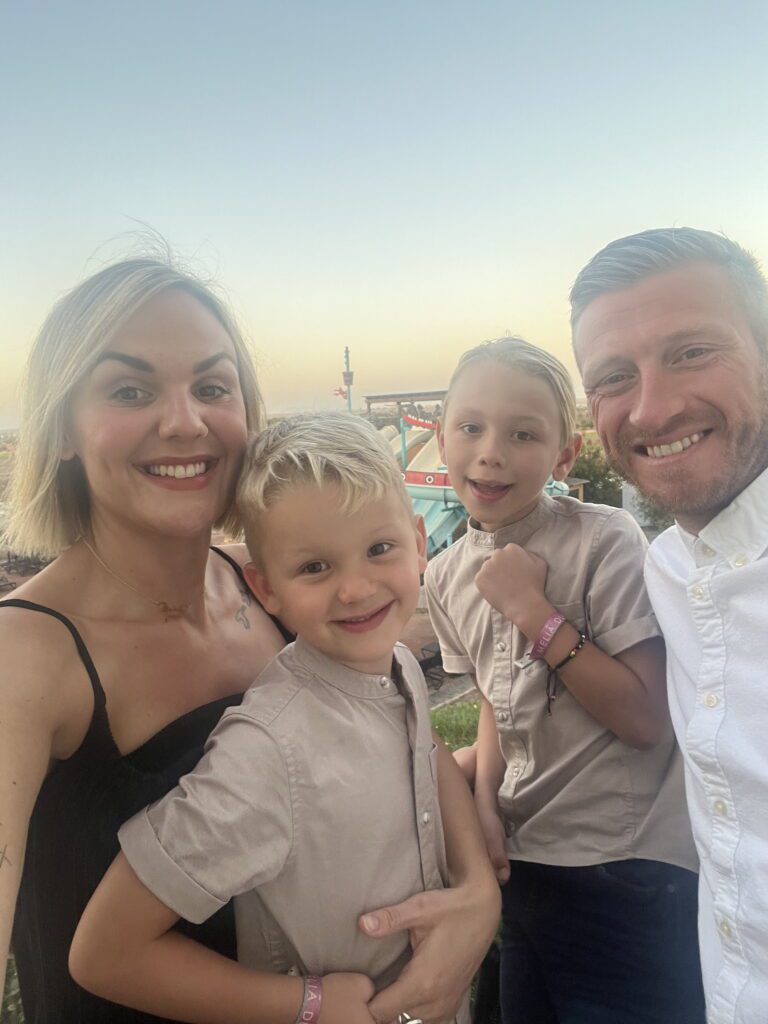
Daughter Hollie Rhodes, 37, a PE teacher and mum-of-two from Hull, is running the London Marathon in his memory, to raise money for Brain Tumour Research.
She said: “In October 2010, Mum called me saying he was jumbling up his sentences and not making any sense. He also had a massive headache and was really distressed, which wasn’t like him at all.
“I couldn’t believe it when we visited the GP, who dismissed his symptoms as stress-related and even said he was faking, something I know my dad wouldn’t do.
“It was a CT scan at Hull Royal Infirmary that showed he wasn’t faking anything. The scan found a tumour growing on the left side of his brain, affecting his speech.
“He had surgery the next week, which was successful, but the biopsy confirmed our worst fear – it was incurable and cancerous.”
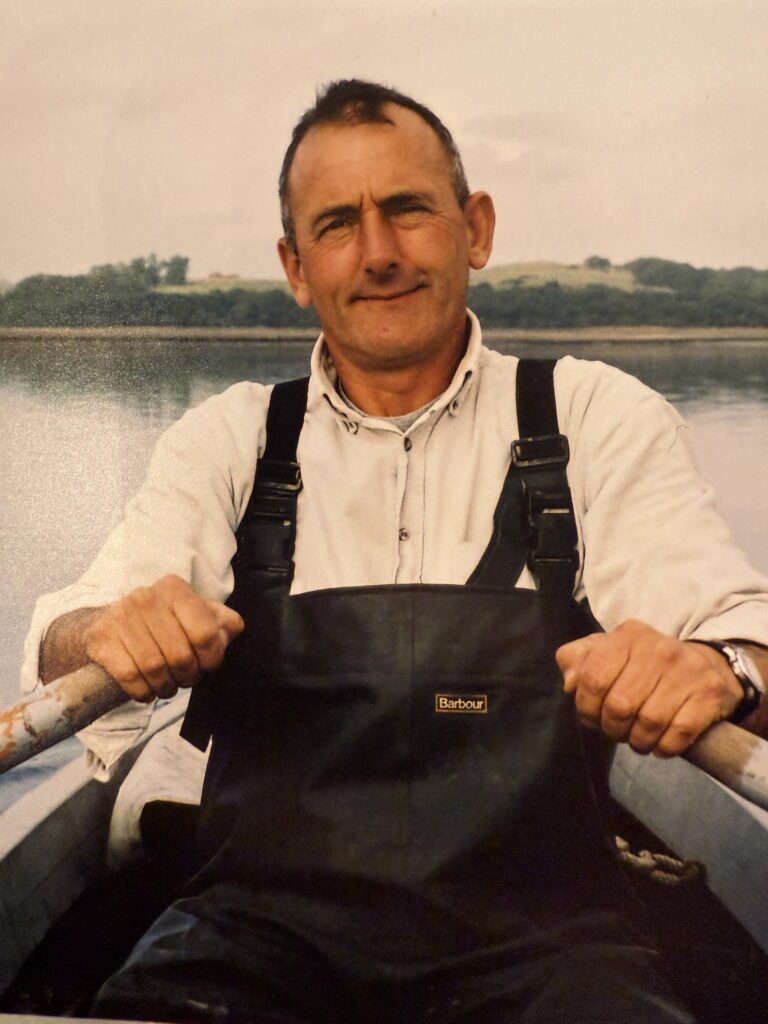
Stephen, survived by his wife, Elaine, daughters Hollie and Lauren, and five grandchildren, underwent one round of intensive radiotherapy and two rounds of chemotherapy to halt the tumour’s growth.
Despite experiencing fatigue, his mood remained positive, his family say, and scans showed no signs of further tumour regrowth.
But he died after collapsing at home, after a blood clot travelled to his heart – related to his treatment or the tumour.
“Dad walked to my sister’s room and barely got through the door when he collapsed.” Hollie said.
“We called an ambulance but unfortunately paramedics couldn’t save him, and they told us after about 20 minutes of fighting that he didn’t make it, and he died on her bedroom floor.
“It was so traumatic and unexpected.
“Although his brain scans were clear, a blood clot was found on his heart, which we’re not sure if it formed because of his treatment or the tumour.
“It was horrible for us to lose him so suddenly, but there is some comfort in knowing it was quick and likely the way he would have wanted to go. I’ll always miss hearing his laugh.”
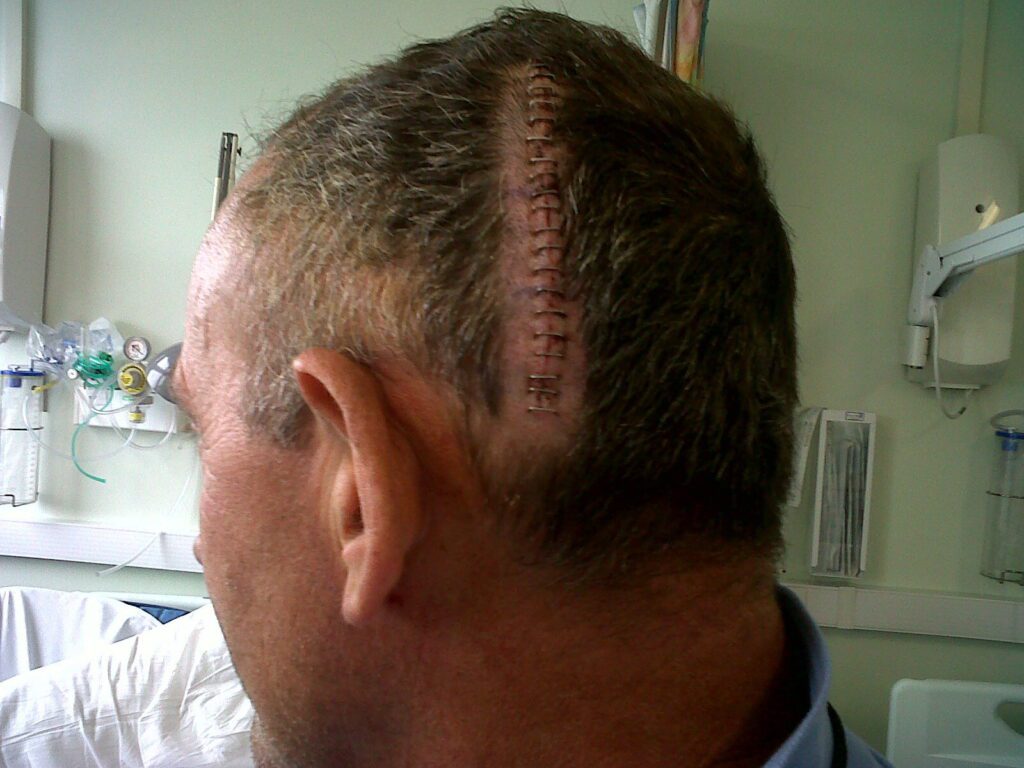
Brain tumours can affect anyone at any age, and kill more men under 70 than prostate cancer.
Around 12,000 people are diagnosed with a primary brain tumour each year in the UK.
Hollie, who is head of PE at a sixth form college, added: “I have personally known three people impacted by brain tumours: my dad, my oldest friend’s little boy, Roux, and another friend’s sister who died after her brain cancer metastasised from breast cancer.
“The current level of funding for research is just not enough.
“It’s the biggest cancer killer of children and adults under 40, so it should absolutely be a priority to stop these deaths. It almost feels like people view brain tumours as a final prognosis. That whole narrative needs to change because more funding in research would bring hope to those impacted.”
Hollie is balancing work, family life, and a rigorous training schedule as she prepares for the iconic 26.2-mile course.

Inspired by memories of her father, she is determined to complete the challenge and raise awareness for Brain Tumour Research.
“Running is definitely not my forte; my colleagues with tell you that and say I’m forced to do it in my work role,” she said.
“On the day, I’ll be thinking of my dad and how he never got to meet his grandchildren, who he would have adored, with Blake, my eldest, named after him.
“Remembering his struggles and how a cure could have kept him with us gives me the strength to keep going. Four or five hours of running is nothing compared to what dad and so many others endure. I’ll remind myself to push through and do this for them.
“Dad was such a hilarious character with a wicked sense of humour. He was always supportive of my sister, Lauren, and me in everything we did.”
Carol Robertson, national events manager at Brain Tumour Research, said: “We’re so grateful to Hollie for taking on this incredible challenge in memory of her dad. Her determination and courage are truly inspiring. Every step she takes in the marathon will help us raise awareness and much-needed funds for vital research into brain tumours. We’ll be cheering her on in April.”
To support Hollie’s London Marathon fundraiser, visit: https://www.justgiving.com/page/runhollierun
Postmaster flies 4,000 miles to hand-deliver letter from King to his great aunt
A postmaster has dispatched his ‘furthest letter yet’ after he hand-delivered a card from King Charles to his great aunt in America – 4,000 miles away.
Luke Francis, head postmaster of Bude’s Post Office in Cornwall, took a special trip to Florida to deliver a 100th birthday letter to Emlyn Makofsky.
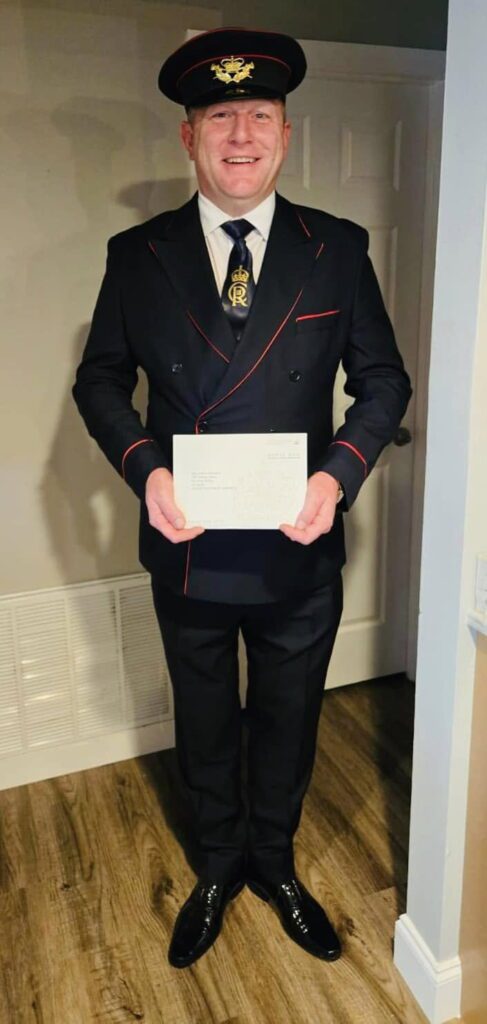
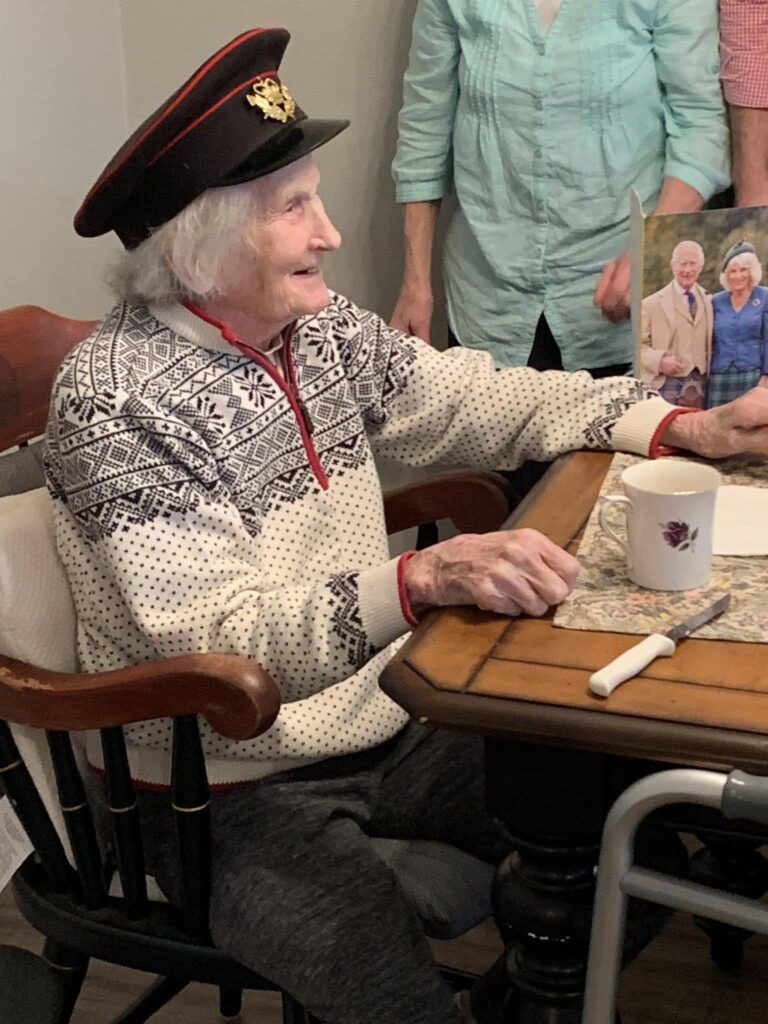
Emlyn Colwill was born one hundred years ago, at Lewdon Farm in Kilkhampton on January 19, 1925.
Growing up she became a nurse, working across North Cornwall, before moving across the pond and meeting her husband, Mr Makofsky.
After receiving a letter from the King, ready for delivery, Luke made his way over to Florida in secret, ready to hand Aunty Emlyn the card himself.


Having arrived, Luke and his family surprised Emlyn with the letter from HM King Charles III congratulating her on her 100th birthday.
Following the big event, Emyln, surrounded by her family, celebrated in style, enjoying a wonderful 100th birthday party, complete with a Union Flag cake and the English national anthem.
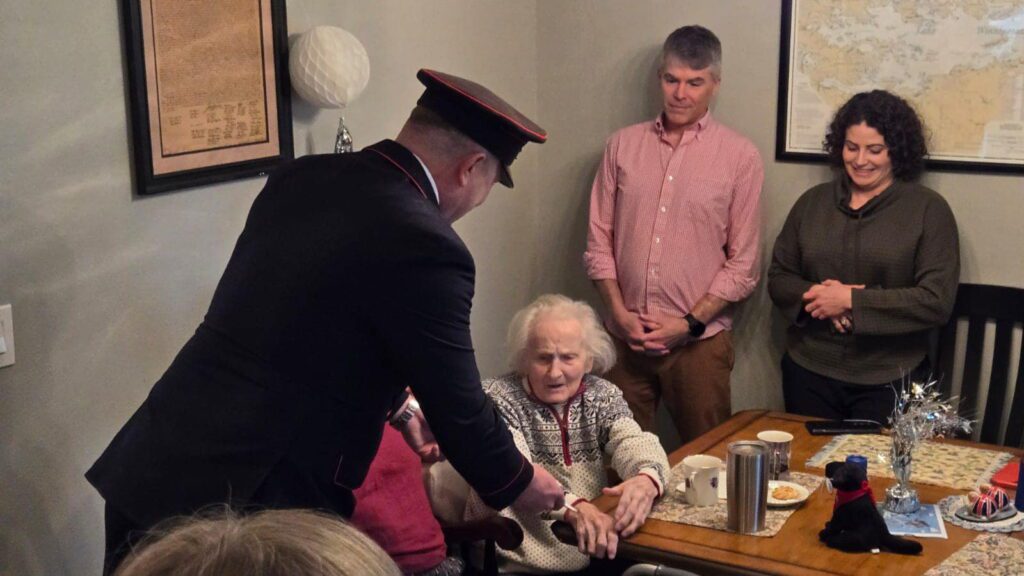
Luke said: “When I handed her the card and she finally got to read it, she got the giggles, she thought it was so brilliant she couldn’t believe it.
“She was overwhelmed and thought it was wonderful and was really privileged to accept the card.”
5ft mum set to become smallest person to row the Atlantic solo
A 5ft mum is set to become the smallest person to ever row solo across the Atlantic – dubbed the ‘World’s Toughest Row’.
Milli Abrams, 48, will begin the 3000 mile “World’s Toughest Row” beginning at La Gomera in the Canary Islands, and reaching the finish line at the English Harbour in Antigua.
Milli will become the shortest and lightest person to complete the feat.
She sets off on December 12 and will also celebrate her 50th birthday after almost two months at sea on 31 January 2026, becoming one of just four women in their 50s to finish the row.

She became inspired to take on the challenge after a sailing the Atlantic with her husband and son over ten years ago and fell in love with the open ocean – but she craved more challenge.
“I sailed across the Atlantic with my husband and my son 14 years ago – and I loved being at sea,” Milli, from East Neuk in Fife, Scotland.
“It felt a little bit easy; challenging but very comfortable, and I’d always craved doing a crossing that was a bit more character building.”
Milli, a former accountant turned small business owner, says she was never a particularly sporty person, and had also experienced struggles with long COVID.
But after a friend completed his own row last year, Milli began to believe she was capable of doing the same – and started an intensive training programme.
“It’s not something I ever thought someone like me could do – I always thought it was for more athletic types,” she said.
“I’m a bit older, and I don’t climb mountains or anything like that. I had long COVID, and it was pretty bad. I wasn’t all that healthy, and so I’ve been working on that.
“But my friend suggested that it’s something I could do – and that was that.
“In the beginning, it was a bit of a fight to get accepted into the race – they can only take a certain number of boats for safety.
“There’s a lot to do. I’ve been on a lot of training courses and had to learn how to use new equipment – and at the same time, I’ve been running my business.
“Pretty much immediately, I started on the physical training – just getting stronger.
“Then it was a case of finding the boat.”
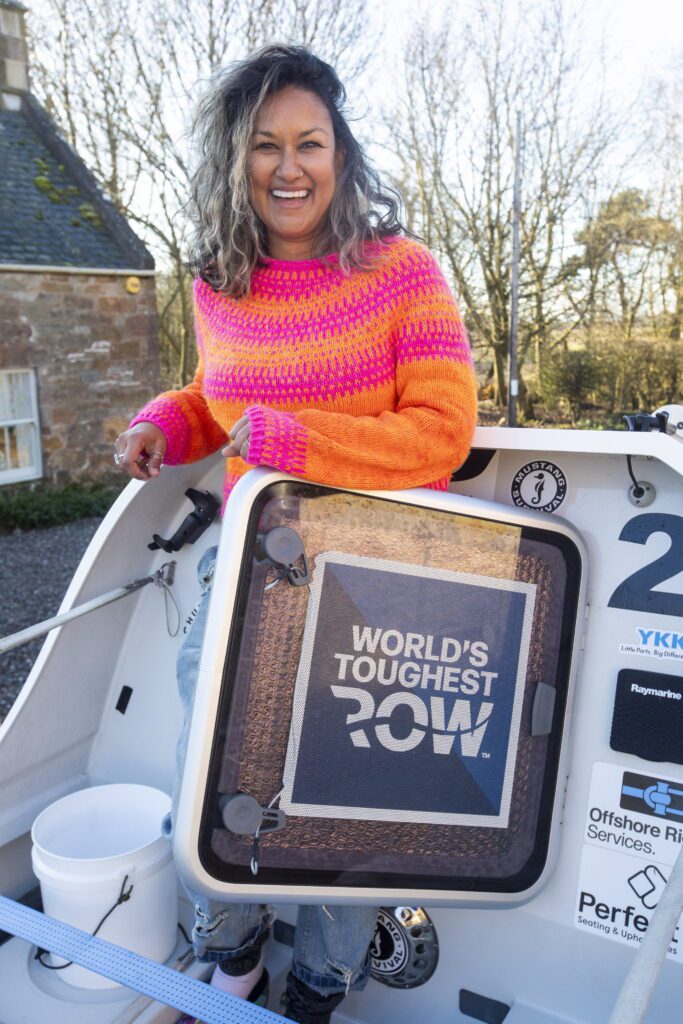
Her boat was purchased second-hand from Liz Wardley, who set a new world record last year for the fastest solo woman to complete the race – beating the record by 15 days.
Milli renamed the boat “Knitannia,” in honour of her love of knitting – and in a nod to her business, Tribe Yarns.
“There’s a very limited number of boats in the world that are designed for solo ocean crossings, so that really narrows it down,” she said.
“Where possible, I try to buy second-hand, so I put out feelers to see if anyone that rowed the year before would have a boat available.
“I got lucky, because Liz’s boat has been incredibly well cared and equipped by Liz. I snapped it up!”
While she has taken every precaution to stay safe during the row, Milli will face storms, waves that frequently reach 40-ft, and the threat of marlins and sharks.
“There will be storms – that’s inevitable,” she said.
“There will be big waves – 40 foot waves are not unusual. It will feel really different compared to when my family sailed it – being on those waves on a tiny rowing boat, right at the water’s surface.
“Marlin strikes are a really big deal and have been increasing over the last decade or so. The boats offer shade for other fish, and marlins come along to hunt. It’s led to a lot of accidents, with marlins tearing holes in boats, almost stabbing people.
“There are sharks – but I’m not as worried about the sharks.
“You’ve also got to try and make sure your kit doesn’t fail. I’ll have two water makers on board – one that’s solar powered, and then a backup hand-pump one, which I really don’t want to end up having to use.
“Your kit is a really big deal – if your water maker fails, that’s life-threatening.
“I’ll be sleeping for two hours then rowing for two hours day and night so there’s no opportunity for my muscles or body to recover.
“Injury is always very possible, and you don’t always have time to recover from that.
“I dislocated my knee a few months ago, and ripped some tendons, so I’ve got to be really careful not to risk that knee again while I’m out there.”
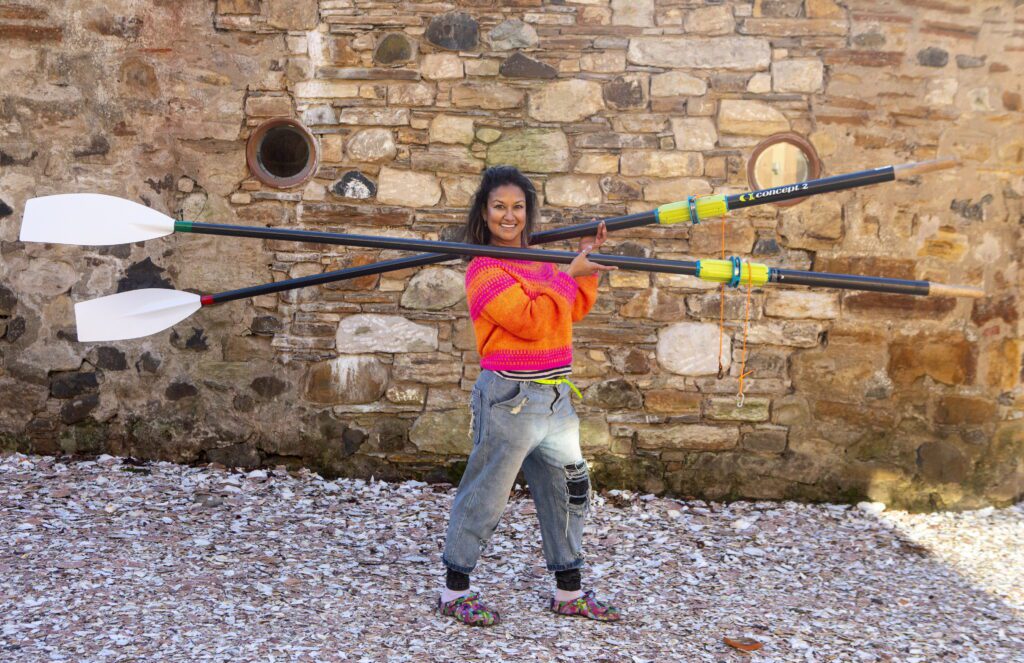
She will be fundraising for two charities close to her heart – The 2 Minute Foundation, an environmental charity dedicated to combatting plastic pollution, and Children’s Hospices Across Scotland (CHAS) who provide care for children with terminal illnesses. She is also on the hunt for sponsors keen to support her on her journey.
“The reason I picked The 2 Minute Foundation was because they’re an environmental charity and they help the planet,” she added.
“I love the way that they make being an environmental activist easy and accessible for everyone. They do two-minute beach cleans, or rubbish picks – and anyone can do it, especially children.
“I also wanted to find a charity that makes contributions to our local community, so when I found out that there aren’t enough hospice placements for children with shortened lives, CHAS was a no-brainer.
“I think it will help to motivate me through the really tough times out there, to think about making a difference.”
Milli believes that she has the mental strength to survive hard times on her own – and hopes she comes out stronger for it.
She hopes that her achievement will bring her a greater understanding of her strength and mental fortitude.
“Part of the reason I wanted to do it was to see what it was like to be that alone for such a long period of time,” she explained.
“I’m hoping to have a bit of time to reflect and slow down a bit. I don’t really slow down – running a small business, is full-on, all the time.
“The aftermath of all of this is a massive unknown for me. I hope I feel happy and ready to jump back into normal life.
“I’m hoping to get a bit more of an understanding of who I am, and how I cope by myself in tough situations.
“And I’d love to help make this feel more doable to people who are like me – because it didn’t feel attainable to me until I met someone who’d done it.”
Milli has been sharing her journey at https://www.justonemorerow.org/. The charities she is supporting can be found at https://2minute.org/ and https://www.chas.org.uk/.
Baby born healthy after spinal surgery inside the womb
A mum was relieved to see her newborn son kick his legs after he had spinal surgery while still inside the womb.
Serena Nye, 24, was told after her 20-week pregnancy scan her unborn son had spina bifida.
It meant his spine and spinal cord was not developing properly, causing a gap in his spine, leaving at high risk of weakness or total paralysis of his legs.
Serena and partner Chris Bown, 26, were given the choice to continue normally, terminate the pregnancy, or have fetal surgery.
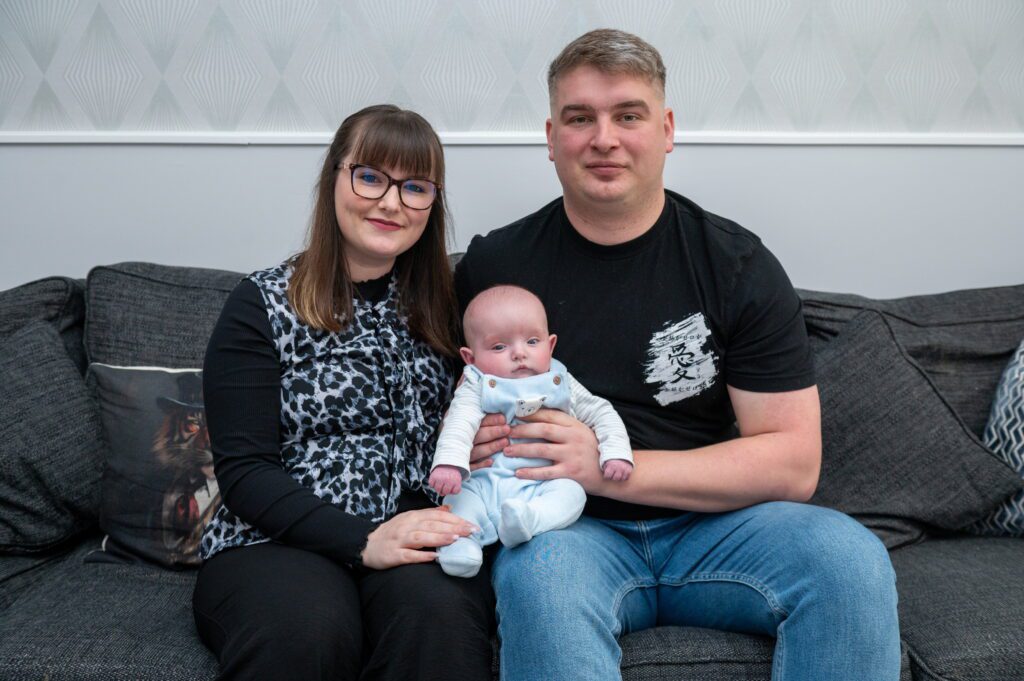
So in an incredible operation, doctors took Serena’s womb OUT of her body, at 26 weeks, to operate on her unborn son’s spine via keyhole surgery.
After the three hour operation, her womb – and baby – were stitched up back inside her body again until it was time to give birth.
Tommy Bown was born six weeks later, at 31 weeks – and was able to kick his legs and feed normally as a result of the surgery.
He spent four weeks in hospital before doting parents Serena and Chris brought him home, to Eastbourne, East Sussex.
Thanks to the super advanced surgery, the tot, now three months old, is hitting all his milestones – and a scar on his back from the surgery is the only evidence of his op.
Serena, a customer service team leader, said: “When we found out he had spina bifida, we were in shock.
“We heard all these stories – we thought he would never walk, or eat on his own.
“But I knew I had to have the surgery to give him the best chance, even though it would be intense – I had never had a surgery before in my life.
“A few weeks later I went into labour and had an emergency C-section – and Tommy was born premature.
“I saw him in the incubator, and he was so tiny – but his legs were moving!
“After weeks in the NICU, it was a massive relief to bring him home – with his scar on his back as a crazy reminder of what happened.
“Now, I look down at my baby and I think ‘you have no idea what you’ve been through already’.”

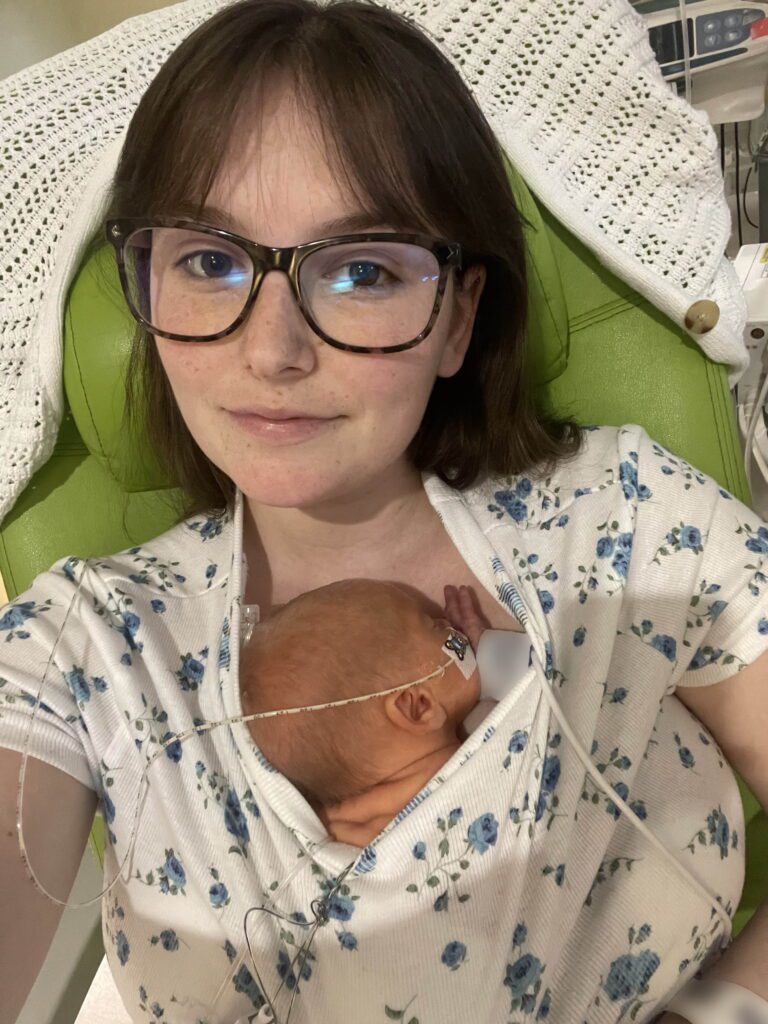
Serena and Chris, a soldier, were referred for a specialist scan because midwives spotted something during their 20-week gender scan.
The following week they drove up to the specialist clinic in London where their little boy was diagnosed with spina bifida.
Because of the way his spine was growing, and a cyst that was developing at the base of his spine, they were warned that it would likely cause him to be severely disabled.
Serena said: “They gave us the options to terminate the pregnancy, to carry on, or have fetoscopic surgery.
“The whole thing was a very numbing experience.”
After discussing with doctors and other parents, they decided to go for the complex surgery to give him the best chance at a normal life.
Serena said: “Leading up to the surgery, I was so nervous – we knew there were risks, but the positives were still higher.
“If we could give him the chance not to need a shunt, or to be able to walk, why wouldn’t we go for it?”
The surgery took place on August 15, 2024, at King’s College Hospital, in Lambeth, and everything went smoothly.
Because of his health conditions, doctors expected the baby to be born a bit early – but hoped to reach 36 weeks.
But at 30 weeks and six days, a check-up revealed Serena’s cervix shortening.
Two days later, she was being rushed to her local hospital, Conquest Hospital Maternity Unit, because she was getting pains and bleeding.
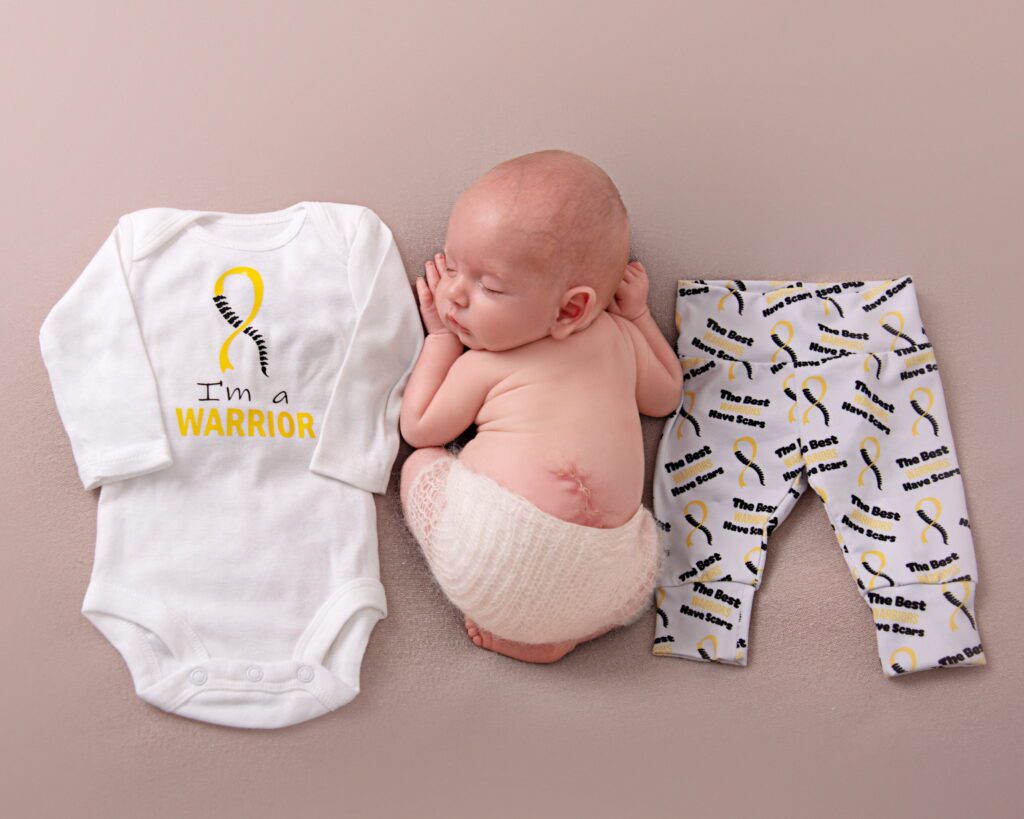
Serena said: “Shortly after arriving, I told the midwife I wanted to push, and she pressed a button then a flood of professionals came in.
“They said the baby was coming, I was in labour, but my waters hadn’t broken yet so I needed surgery.
“I had an emergency caesarean section due to him also being breech, and baby Tommy was born at 6:53am on September 21, weighing 3lbs 15oz.
“We had no idea what he would be capable of when he was born even though he showed good signs during pregnancy.
“We wanted to be prepared for any outcome.
“The first thing my partner said when I came around was that Tommy’s legs were moving – he could move!”
Because Tommy was premature, he was transferred to King’s College Hospital where he spent three and a half weeks in a specialist NICU before being transferred back to Conquest Hospital.
Tommy was finally taken home on October 19, and has been growing stronger and hitting milestones ever since.
The wound on his back from his surgery is now healed – and serves as a reminder of his fight.
Serena said: “I can’t wait to sit him down and tell him what he went through when he’s older.
“The next steps are waiting for him to crawl and seeing how he moves, but we’ll face every challenge with strength and determination.
“If we hadn’t done the surgery while I was pregnant, he would have been born more poorly and would have needed lots of surgeries after birth.
“Now, nobody can believe how well he is doing.”
The Codfather: UK’s oldest chippy owner still serving fish suppers aged 91
Britain’s oldest chip shop owner is still serving up fish suppers AGED 91 and says he has no plans to retire.
Sprightly John Panayis has spent more than 60 years in the food industry and still works seven hour shifts, five days a week.
Despite his impressive age, he’s showing no signs of slowing down and continues to fry fish and batter sausages at Nick’s Plaice in Northampton.
John took over the chippy in 2009 when he was aged 75 and handed over the business to his son Nick five years ago.
He had planned to step back but found he missed working so much and was bored at home so he returned to behind the frying counter.

Great-grandad-of-two John has served up around 500,000 portions of chips during his 16 years at the popular takeaway.
And he has vowed to carry on for as long as he can keep going after deciding he “can’t do retirement”.
John admits eating fish and chips twice a week – sometimes even for breakfast – but says his longevity is also down to healthy eating and drinking the ‘right wines’.
Grandfather-of-four John, of Northampton, said: “I found I couldn’t do retirement. How many times can you really mow the lawn and trim the roses?
“I’ve never been one to be stuck inside the house, I only retired for a couple of months before I came back.
“I’ve got to be with people and the work keeps your mind active.
“I like coming here and I like the customers, they support us and I am very grateful for that.
“I hope to continue because I feel fine and I have no plans on retiring.
“I’m healthy, my wife is a great cook and I eat the right foods and drink the right wine.
“I think I’ve been ill once my whole life. I eat fish and chips at least twice a week. I sometimes have them for breakfast.”

John first started working in the hospitality business at 17 when he arrived in the UK from Cyprus and has owned restaurants in Hereford and Northampton.
He started Northampton’s first French restaurant and has also run a coffee shop and a nightclub in the town over the decades.
John, who has four children with wife Andrea, 84, said: “The shop has been in the family since 2009 but I used to run restaurants before.
“We started up with my son being the co-owner but last year I bought back into it.
“I’ve been in the hospitality business since 1950, ever since I came from Cyprus.
“I always worked in various businesses and I’ve never been out of work, I don’t know what that’s like.”
John regularly hauls 20kg bags of potatoes around his shop while doing 30 hours weeks and says age is just a number when it comes to work.


He added: “I certainly don’t know of anyone my age who is working. Most of them are suffering from their legs and backs.
“I know friends of mine in the catering business, when they retired they can’t work now – or they’re dead.
“I’ve always joked with my family if I came back after I died, I’d probably be a fish.
“I am 91, I’ll be 92 in March. I’m a day older than I was yesterday, the 91 or 92 doesn’t matter. Why grow old, I never say ‘I can’t do this’ or ‘I can’t do that’.
“I still lift the 20kg bag of potatoes. I can go on until I’m not able to do it, but while I’m able to do it, I’m going to.
“If you retire, you retire from living. Life doesn’t end when you’re 65.”
Son Nick said: “He’s just brilliant. He gives us all inspiration. He has always been a good cook and all the customers love him.”
“I texted ‘hello’ to a random phone number as a joke in 1998 and met my wife”
A cheeky DJ texted a message to a random number as a joke in 1998 and ended up meeting his future wife.
Donovan Shears was given his first mobile phone on his 18th birthday so decided to send out text messages saying “hello” to made up numbers.
He was stunned when he received a message back from a woman called Kirsty who simply said “hi” and they started exchanging text messages.
They eventually arranged to meet for a date in Donovan’s home city of Coventry, and quickly fell for each other.

The couple got married in 2002 and went on to have two children, nine-year-old son Stirling and six-year-old daughter Alora.
Donovan, 45, a former DJ who now works in cyber security, said: “I started sending out random text messages, showing off to my friends saying ‘I can page other phones’.
“I picked the first four digits the same as mine which were 07775, then the last three digits randomly – it was probably about five or six different numbers – and then didn’t think anything of it.
“I just a message saying ‘hello’. I remember one of the messages I sent was to a number ending in 365.”
The number belonged to Kirsty Shears, who was living more than 100 miles away in Cleethorpes, Lincs.
She said: “I’d only just got the mobile so assumed it was from somebody I’d given my number to so just responded to it saying ‘hi who’s this?
“It came back ‘Don’ and we just started chatting from there.
“We would text through the day and then obviously it would become more and more frequent and then at one point we decided we should phone
each other.”

The couple’s blossoming relationship started before camera phones became the norm.
Scots-born Kirsty, who had a Alcatel mobile, recalled how the couple had to describe what they looked like on text.
The quality engineering manager said: “I asked him what he looked like and he said he was 6ft 6ins and I thought ‘is he really?’
“Luckily he really is that tall so I wasn’t being catfished via text.
“I told him I was Scottish, 5ft tall and not slim but not fat and he said ‘that’s my type’.
“The first time we knew what the other looked like was when we met at Coventry train station.”
Donovan added: “When she told me she was living in Cleethorpes I was like ‘where’s that in Coventry?’
“We were texting so much my phone bill was over £250 a month, I think that’s when I decided we should call.
“Feelings started to develop and she’d got the most beautiful Scottish accent, which attracted me to her as well.”


The pair eventually met up about six months after Donovan sent the first text when he invited her to Coventry.
Kirsty added: “I said to my stepsister, I’ve got to go and meet this guy, and she was like, ‘He could be anyone’, and I was like, ‘Yes, I know’, but I was 18 and didn’t really think about consequences.
“I just got on a train and came to Coventry.”
Donovan took Kirsty to a nightclub before buying her a kebab afterwards.
“The rest is history,” he said.
“I remember coming back from our first night out and we just cuddled up, it was kind of magical in a way.
“She is an amazing woman, she’s so intelligent and we know each other so well, she’s my best friend as well as my wife.”
This Valentine’s Day, the couple are joining dozens of others who are renewing their marriage vows at a special service at Coventry Cathedral.
Donovan said: “I took my son for a suit fitting yesterday and he absolutely loved it, then my girl, she’s like, ‘I want to see Mummy get dressed up’, she can’t wait.”
Pensioner becomes Britain’s oldest ping pong player – aged 92
Britain’s oldest ping pong player is still batting off the competition and beating opponents 30 years his junior – at the age of 92.
Retired tool maker Ivan Pedley plays table tennis twice a week and says he has no plans to retire from the game he loves.
The grandad-of-three first took up the paddle sport as a 14-year-old boy in 1947 and is still going strong 78 years on.
The sprightly pensioner plays around 14 games a week at Great Wyrley Table Tennis Club in Staffordshire often against opponents much younger.
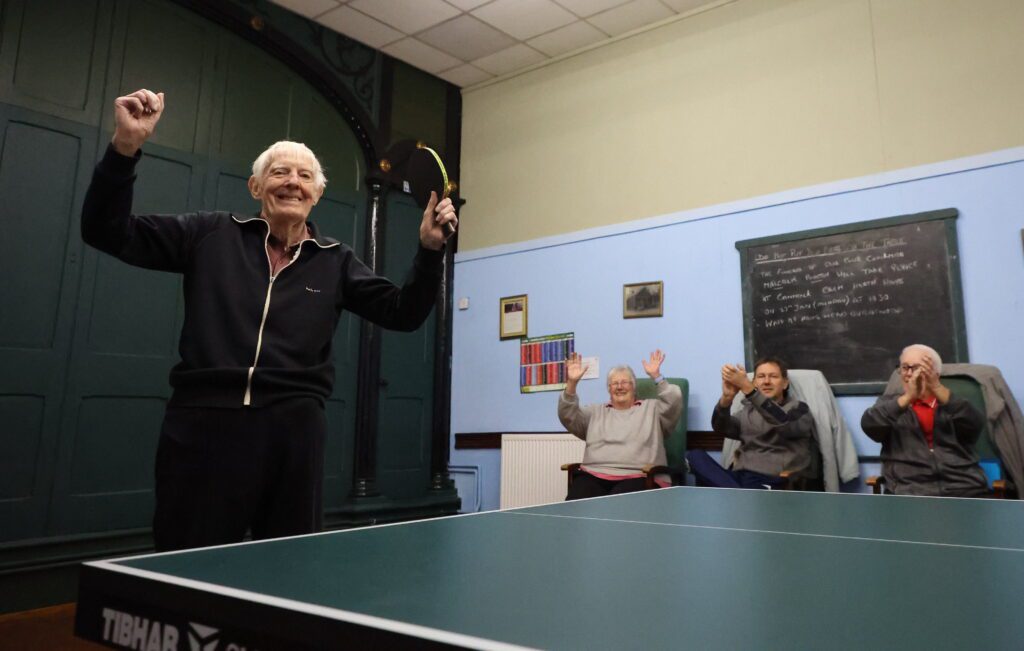
And he says although he may have slowed down in his old age he rarely gets knocked off the table and the trick is ‘all in the technique’.
Ivans says the sport helps him stay fit and healthy and playing into old age is one of the best things he’s ever done.
Ivan, of Walsall, West Mids., said: “I enjoy every minute of it. It’s the best thing I’ve ever done. I don’t know anyone older than 92 playing.
“They don’t knock me off the table either. You might be faster than me – but it’s all in the technique.
“We have a lot of people in their 60’s but I play the younger people too , I try to play everybody at the club.
“I’ll keep going for as long as I can, as long as my health stays. Sitting on your backside is no help to anyone.”
Ivan first found his passion for ping pong as a teenager before hanging up his paddle in his 20s.
But he rediscovered his love of the sport again in his 60s following a chance game with a friend while on holiday.

Ivan then started playing regularly again as a way to keep fit alongside swimming, bowling and Judo, in which he is a brown belt.
He added: “I started when I was in my early days, around 14.
“Then I didn’t play for years until I went on holiday where I met a lad. I played with him and he invited me to join this club.
“I was out of my depth but they were so kind to me. But I soon picked it up again and I think I’ve got better because of the standard I’m playing against.”
He jokingly added: “I do let these lot win sometimes though because I don’t want to dishearten them.”
Ivan now spends every Tuesday and Friday at the club, chalking up nearly three hours each time battling opponents.
He said: “I don’t want to sit here and do nothing, I like to keep myself healthy. I’ve done judo and karate too.
“It helps me to keep fit, I’m 92 and I’m not as mobile as I’d like to be. I keep going. It makes me get up and do it.
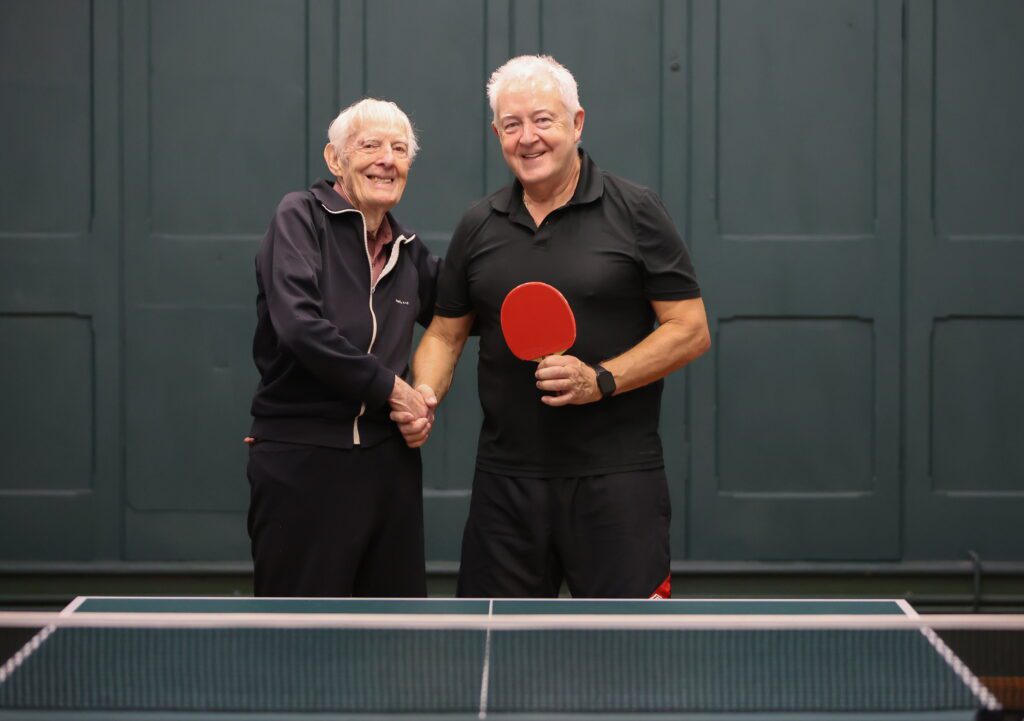
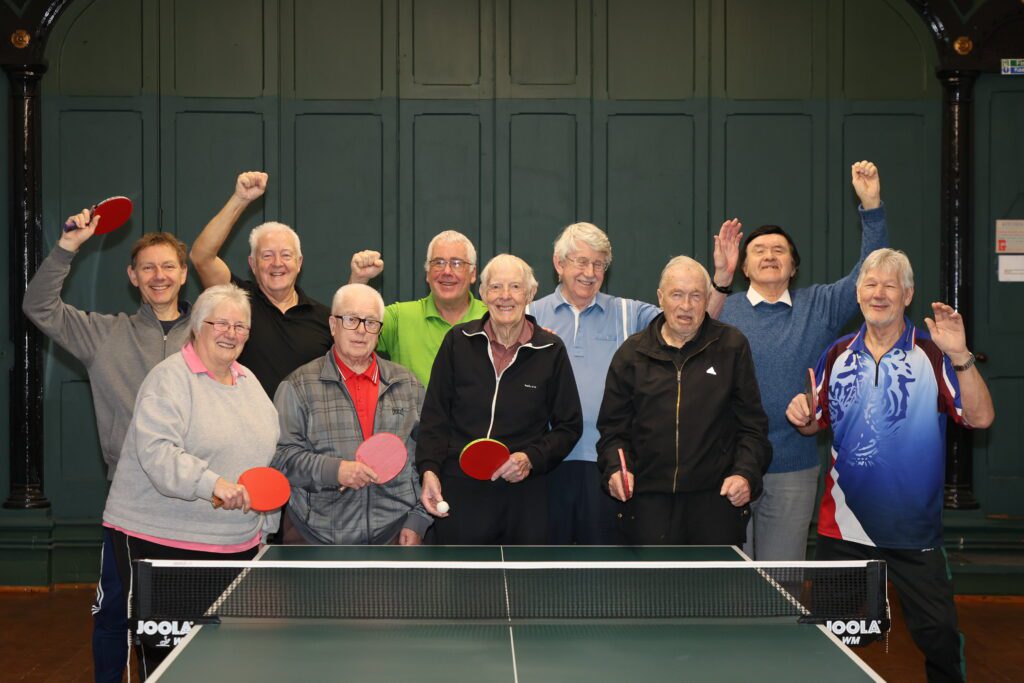
“Once you’re committed you have to try and turn up. I’d tell anyone to join a club to start with.
“I’ve done amateur competitions, I’ve got certificates from what I’ve achieved at table tennis, I won some competitions in my late 60s.
“I have on average seven games, sometimes I play more. It’s such a well organised club. They do help me with my game and I appreciate it.
“They are a wonderful crowd of people, second to none.”
Club secretary Tony Reeds, 84, added: “ He’ll always put his heart into it.
“It varies on the people there but they will all have a game with him.
“Anyone we get here he plays, He loves it. He’s part of the furniture now. He’s had some good games at the club now.
“He tells people if you want to keep fit this is the way to do it.”




